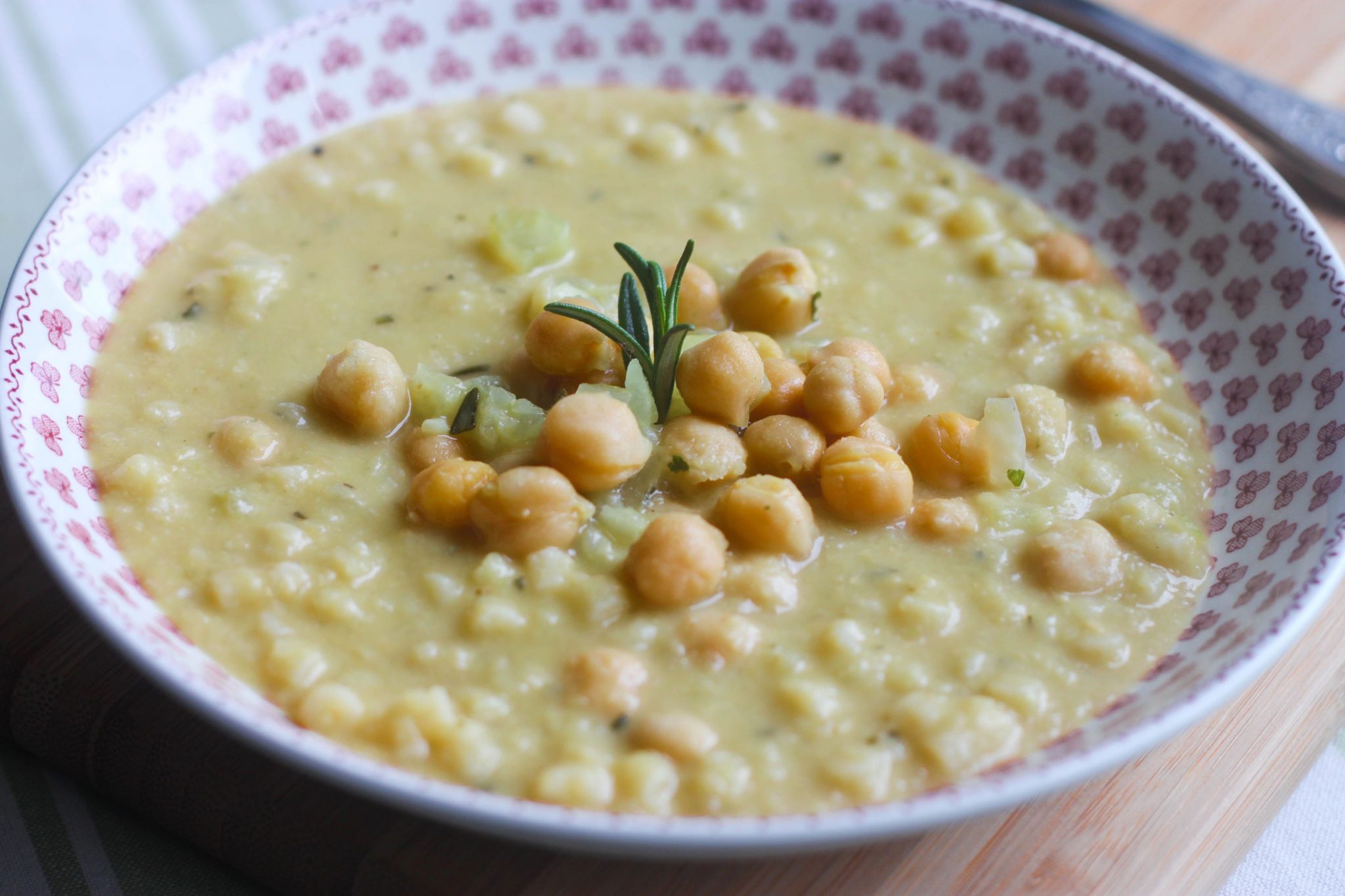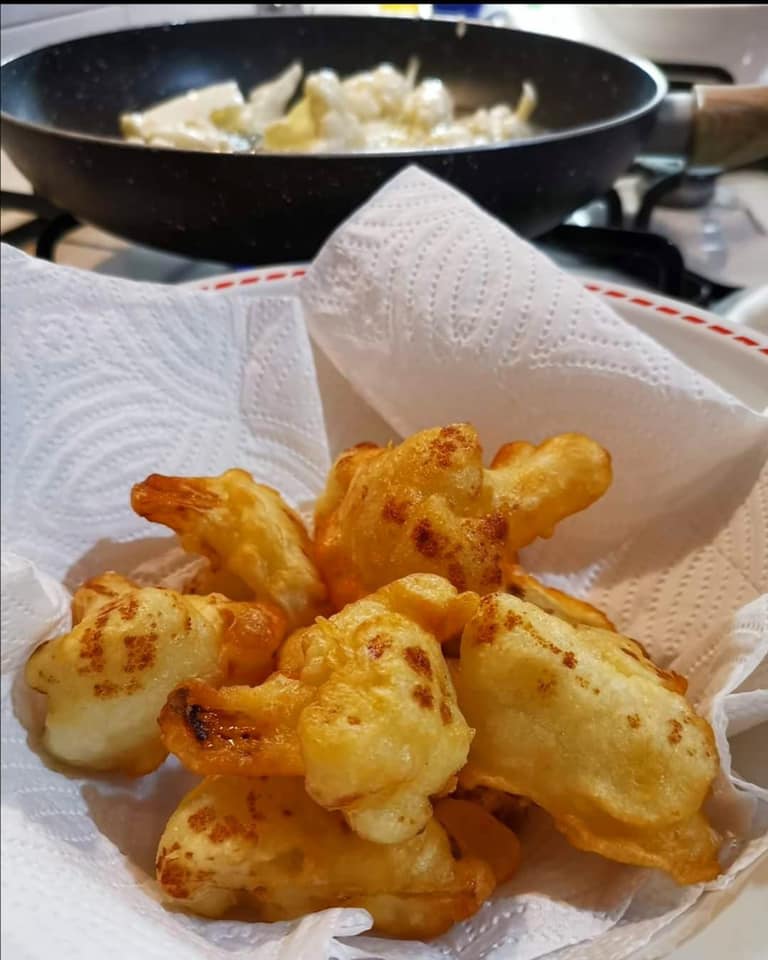Here we are, it’s March 19, Father’s Day and we have a very special surprise for you, not just custard cream puffs, but an entire Menu of San Giuseppe. Roll up your pyjama sleeves and immediately start your journey with dad into the ancient culinary traditions in Lazio.
First course – Pasta and chickpeas of San Giuseppe

Pasta and chickpeas is a typical Roman dish of peasant tradition, a soup that warms you up during the winter season, while waiting for the spring equinox. On this occasion, San Giuseppe Bonfires, a blend of Christian and pagan centuries old traditions, are lit throughout the whole Lazio Region to welcome the more generous season. Pruned olive tree branches and craftsmen’s waste wood are recycled by rural communities for the religious celebration dedicated to San Giuseppe, the Patron Saint of masons. In Itri, on the Riviera di Ulisse, the màmmuòcc’, a puppet made of old rugs symbolizing winter is also burned.
Second course – Vegetarian Fritters

San Giuseppe Fritters from Roccantica – Facebook @ProLocoRoccantica
In Roccantica in Sabina, on March 19, the Frittelli are prepared, crunchy and tasty bits of fried seasonal vegetables, such as the cauliflower, a perfect street snack to be consumed on Father’s Day only, in honour of San Giuseppe Frittelaro. It is said that, after the flight into Egypt with Mary and Jesus, he began selling fritters to support his family in that foreign land.
Desserts:

Maritozzi with whipped cream
Maritozzo is a typical Roman dessert made with flour, eggs, butter and honey, baked and stuffed with whipped cream or enriched with raisins, the more sober version allowed during Lent, and praised by the famous Roman poet Gioacchino Belli, “The maritozzoli are rhomboid shaped loaves of bread made of flour, oil, sugar, and sometimes candied fruit, or aniseeds, or raisins, consumed in Rome in large quantities during Lent”.
This delicious bakery product owes its name to the Ancient Roman tradition of proposing marriage to young men on the first Friday of March, by hiding a ring in a loaf. San Giuseppe, therefore, besides being the protector of the unlucky ones, also became, in popular tradition, the patron saint of unmarried girls.

The Bignè di San Giuseppe
The Bignè di San Giuseppe, also called Zeppole in Itri and southern Lazio, are century-old custard cream puffs prepared on Father’s Day in honour of San Giuseppe Frittellaro during the Bonfires. Being probably of Neapolitan origins, this speciality can be baked or even fried, according to the Parthenopean tradition.
Unlike the Neapolitan zeppole, the bignè are large, round and covered with sugar icing, with a delicious custard cream filling, which you’d better be careful not drop on your shirt.
Are you ready children and fathers? Let us get started.
Ingredients – for about 20 pieces:
For the dough:
- 250 g of 00 flour
- 250 g of water
- 50 g of butter
- 5 medium eggs
- 5 g of salt
- 1 litre of sunflower seed frying oil
- vanilla icing sugar
For the custard cream:
- 460 g of fresh whole milk
- 6 medium egg yolks
- 150 g of sugar
- 30 g of 00 flour
- 20 g of potato starch
- 1 tablespoon or 1 sachet of vanilla extract
Preparation
Dough
Place a saucepan on the stove with water, salt and butter cut into small pieces, then stir to melt the butter and wait for the mixture to boil. Add the flour and keep stirring until you obtain a thick, rubbery dough, which you can easily remove from the saucepan surface. Pour it onto a surface and work it with a spatula until it gets lukewarm, then roll it out with your hands. At this point, pour one egg at a time into the dough and knead. Proceed with the second egg only when the first one is completely absorbed, and the dough gets firm again. On a baking tray lined with parchment paper, use a one centimetre piping bag to form small balls of dough of 6-7 cm diameter separating them of at least 3 – 4 cm. Flatten the tip of each puff with the back of a slightly damp spoon. Heat the oven to 200° and cook the mounds of dough for 12 minutes. When they form a crust, the beignets are ready to be fried in a saucepan with plenty of boiling oil (165 – 170°). Dip one puff at a time until it comes up to the surface, golden and doubled in volume. Turn them to cook both sides and they will be ready in about 2 minutes. Change the oil at most every 10 beignets, let them dry and cool on absorbent paper for 1 hour.
Custard cream
Whip the egg yolks with sugar and vanilla for about 2 minutes until the mixture is light and fluffy. Add sifted flour and starch, mix and whip until you obtain a smooth, homogeneous mixture. Boil the milk in a saucepan, remove it from the heat and quickly pour in the egg yolk, sugar, and flour blend. Put it back on the medium heat stove for a few seconds, until the egg mixture will float to the surface of the milk. After about 1 minute, milk bubbles will appear, piercing the yolk surface and the egg will detach from the sides of the pan, making way for the milk. Stir quickly with the whisk and remove from the heat until the custard thickens. Immediately put it in a bowl, cover it with cling film and put it in the fridge for 15 minutes. It will be ready to fill the custard puffs once they completely cooled.
Pierce the bottom of each puff with a knife and fill it with lots of custard cream using the piping bag with the small nozzle (2 cm). Sprinkle with icing sugar and feast on St. Joseph’s Beignets, father and child.
Best wishes to every dad!
